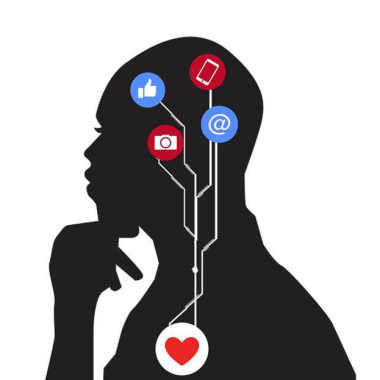New2 Eating Disorders, ed Morris J, a workbook in association with the Royal College of Psychiatrists – in press
Anke Kleim, Petya Eckler, Andrea Tonner. (2019). “Too good to be true”: Semi-naked bodies on social media. In I. Chiluwa and S. Samoilenko (Eds.). Handbook of Research on Deception, Fake News, and Misinformation Online. Hershey, PA: IGI Global. See full text. See blog post
Andrea Tonner, Petya Eckler, Julie Cameron, Anke Kleim. Exploring a role for positive body image in social media use. Abstract presented at the biennial conference of the European Communication Research and Education Association (ECREA), November 2018, Lugano, Switzerland.
Petya Eckler, Andrea Tonner, Julie Cameron, Anke Kleim, Stephanie McAlinden, Halina Rifay, Calum Munro, Charlotte Oakley, Sara Preston, Sarah Riley. Digital media and eating disorders: Future directions for impactful research. Poster presented at the biennial conference of the European Communication Research and Education Association (ECREA), November 2018, Lugano, Switzerland.
Morris, J and McKinlay, A. (2018) Multi-disciplinarymanagement of Eating Disorders Springer, with accompanying website/app ‘Anorexiabytes’
Kleim, Anke J. (2018). (Not) every body is beach body ready. Discussions of the female beach body in online and offline contexts. Poster presented at Appearance Matters 8 Conference, Bath, UK, 12.06 – 14.06. 2018.
Andrea Tonner, Petya Eckler, Julie Cameron. Using a collaborative approach to develop research questions. Abstract presented at the 9th Workshop on Interpretive Consumer Research, April 2017, Stockholm, Sweden.
Ni Zhang, Shelly Campo, Jingzhen Yang, Petya Eckler, Linda Snetselaar, Kathleen Janz, Emily Leary. (2017). What motivates young adults to talk about physical activity on social network sites? Journal of Medical Internet Research, 19(6), e226.
Petya Eckler and Yusuf Kalyango Jr. (2017). The female body on social media. In K. Burns (Ed.). Social media: A reference handbook. Goleta, CA: ABC-CLIO.
Petya Eckler, Yusuf Kalyango Jr., Ellen Paasch. (2017). Facebook use and negative body image among U.S. college women. Women & Health, 57(2), 249-267.
Anke Jobsky, Petya Eckler, Andrea Tonner. Mediatizing the naked truth – A re-conceptualisation of the ideal beach body in contemporary media. Abstract presented at the biennial conference of the European Communication Research and Education Association (ECREA), November 2016, Prague, Czech Republic.
Munro C, Randell L, Lawrie An Integrative Bio-Psycho-Social Theory of Anorexia Nervosa. Clinical Psychology and Psychotherapy 2016; DOI: 10.1002/cpp.2047.
Davies JE, Cockfield A, Brown A, Corr J, Smith D,Munro, C. (2016). The medical risks of severe anorexia nervosa during initial re-feeding and medical stabilisation. Clinical Nutrition; http://dx.doi.org/10.1016/j.clnesp.2016.09.005
Ensslin, A., Skains, L., Riley, S., Mackiewicz, A., Haran, J., Halliwell, E. 2016. Exploring digital fiction as a tool for teenage body image bibliotherapy. Digital Creativity 27(3), 177-195.
Riley, S., Evans, A. & Mackiewicz, A. (2016). It’s just between girls: Negotiating the postfeminist gaze in women’s ‘looking talk’. Feminism & Psychology, 26 (1), 94-113.
Willis R, Fuller J, Kathuria L, Khan S, Morris J, et al. (2015) Girls Growing Up: A Feasibility and Acceptability Study to Explore the Antecedents of Anorexia Nervosa in Girls Aged 7 to 17. J Child Adolesc Behav 3:199 doi:10.4172/2375-4494.1000199
Jobsky, Anke J. (2014). Attracted by real men? – The impact of non-idealized male models on advertising effectiveness and emerging implications for scholars, politicians, and marketers. Poster presented at Appearance Matters 6 Conference, Bristol, UK, 01.07 – 02.07.2014.
Munro C, Thomson V, Corr J, Randell L, Davies JE, Gittoes C, Honeyman V, Freeman CP. (2014). A new service model for the treatment of severe anorexia nervosa in the community: the Anorexia Nervosa Intensive Treatment Team. The Psychiatric Bulletin, 38(5), 220-225.
Polnay A, James VAW, Hodges L, Murray GD, Munro C, Lawrie S M. (2014). Group therapy for people with bulimia nervosa. Psychological Medicine, 44(11), 2241-2254.
Evans, A. & Riley, S. (2014). Technologies of Sexiness: Sex, Identity and Consumption. New York: Oxford University Press, USA.
Jobsky, Anke J. (2013). The Body-Image-Meaning-Transfer Model: An Investigation Of The Sociocultural Impact On Individuals‘ Body-Image. Hamburg, Anchor Academic Publishing.
Morris, J. (2012) ‘Eating Disorders’ in IACAPAD Open Access Online Textbook of Child & Adolescent Psychiatry, ed Rey, J
Sanchez-Ortiz VC, Munro C, Startup H, Treasure J, Schmidt U. (2011). The role of email guidance in internet-based cognitive-behavioural self-care treatment for bulimia nervosa. European Eating Disorders Review, 19(4), 342-8.
Sanchez-Ortiz V, House J, Munro C, Startup H, Treasure J, Williams C, Schmidt U. (2011). ‘A computer isn’t gonna judge you’: A qualitative study of users’ views of an internet-based cognitive behavioral guided self-care treatment package for Bulimia Nervosa and related disorders. Eating And Weight Disorders, 16(2), e93-e101.
Dowds J (2010). What do young people think about eating disorders and prevention programmes? Implications for partnerships between health, education and informal youth agencies. Journal of Public Mental Health, 9(4).
Sanchez-Ortiz VC, Munro C, Stahl D, House J, Startup H, Treasure J, Williams C, Schmidt U. (2010). A randomised controlled trial of Internet-based Cognitive-Behavioural Therapy for Bulimia Nervosa or related disorders in a student population. Psychological Medicine, 41(2), 407-417.
Riley, S., Rodham, K. & Gavin, J. (2009). Doing weight: Pro-ana and recovery identities in cyberspace. Journal of Community and Applied Social Psychology, 19, 348-359.
Riley, S.C.E., Burns, M., Frith, H. & Markula, P. (Eds). (2008). Critical bodies: Representations, Practices and Identities of Weight and Body Management. London: Palgrave/ MacMillan.
